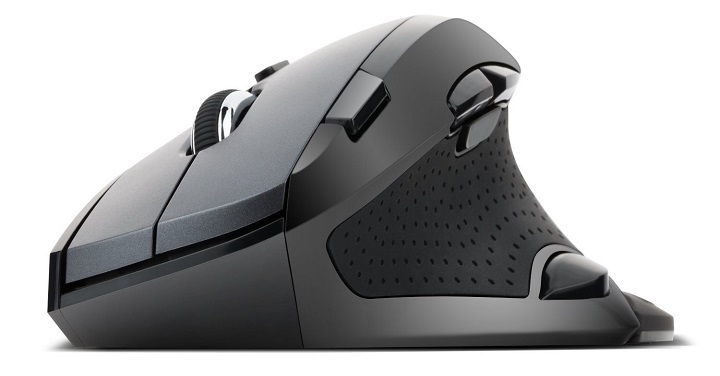Though the digital age has positively influenced the business world, allowing us to work faster and more efficiently, we often have to pay a price with our health. If your job involves being stuck on a computer most of the time, you’re probably no stranger to wrist pain or other physical complaints such as carpal tunnel syndrome and tendonitis. These and similar issues all result from repetitive hand strain due to a poorly designed computer mouse. And since every computer requires a mouse, ditching it to avoid hand injury is simply out of question.

With an estimated 30-50% of office workers affected with hand pain, it’s more than clear that using a regular computer mouse is damaging to our health. And when it comes to a regular computer mouse ergonomically correct is not a phrase that you can use to describe it. We’ve all seen how a standard computer mouse looks: it’s small and designed to fit in your palm in a horizontal position with your wrists resting on the desk. In this position, there’s an abnormal amount of tension on your shoulders, arms and hands.
Fortunately, there are ergonomically designed computer mice that can make your time at the desk a little easier. Ergonomic computer mice are built to be used vertically which allows for a more natural and easier grip. With a vertical computer mouse ergonomically correct hand position is assumed, reducing the amount of stress the wrists undergo. This way, there’s no pressure on your median nerve which significantly decreases the risks of developing carpal tunnel syndrome.
It’s important to note that in order for the ergonomic mouse to fit comfortably in your hand, you should find a model that’s specifically tailored to you. If you’re using your left hand, it’s important to find a computer mouse specifically designed for left-handed users. Moreover, pay attention to the size of the mouse so that it can fit ideally in your palm and be easier to use.
The variety of ergonomic computer mice is incredible, which means that it’s easy to find an option that suits your needs. For instance, trackball mice work by moving your palm over the ball to manipulate the cursor, while button mice can be operated by a slight movement over the keyboard. Once you find the type of mouse that meets your needs, you can be able to work for longer periods throughout the day and take fewer days off due to hand and wrist injuries. Because your hands won’t experience as much fatigue, you can concentrate better on the task at hand.